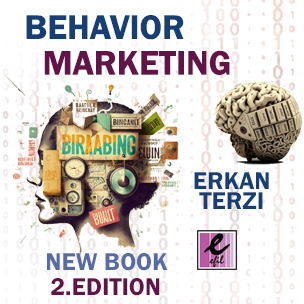Years of research in marketing science have shown that unless those working in this field thoroughly study and implement necessary applications and research, it all remains meaningless. This week, I visited several shopping malls in Istanbul and wondered why the stores of major brands were nearly empty. Why were there no customers in these stores? Of course, the current economic turmoil clearly has an impact on consumers. The effects of the economic crisis in Turkey and around the world are still ongoing. Typically, the socio-economic status evaluations of consumers are gradually affected, starting with segments C and B during economic crises. However, today, even segment A is facing the same problem: “Customers do not want to buy products.” In fact, according to Maslow’s hierarchy of needs, we know that consumers prefer to stay at the bottom of the pyramid during times of economic difficulty, making purchases more based on necessities. But can marketing still be a productive tool for brands even in such crisis situations? My answer is a definite yes.
The expenses for stores are quite high for brands, and when there are no sales, the additional costs of digitalization further lead brands into loss rather than profit. In the malls I visited, dozens of stores had closed, and unfortunately, the ones that remained open were experiencing very low visitor traffic. Now, we don’t expect sales associates to stand outside their stores and shout like in the old marketplaces. But what are the marketing and sales departments doing about this? There is a mistake somewhere, and it’s not just the economic crisis. For a company that has never implemented personalized and integrated marketing strategies, there’s a lot to discuss. However, we need to understand that marketing is not a kitchen but a battlefield. We must have a marketing strategy that is aggressive in the market but builds loyalty on the customer side.
Take a look at your brand today—how many campaigns do you have around your products? Is it 1, 5, 10, 20, or 30? In my opinion, in today’s quantum marketing world, a brand should have over 100 campaigns in a strategic framework. And there’s no need to shout these campaigns out to everyone. Personalized marketing will be a remedy in this regard. Channel structuring plays a crucial role in this strategic management. You need to speed up slow systems, especially in terms of data management and application. Integrated marketing efforts come into play exactly in this context. Campaigns that utilize both corporate and social support can boost sales in a short time. Marketing strategies should focus not only directly on the product but also on the brand itself. Since this is a sales-focused strategic approach, we’re talking about a short-term strategy spanning just a few months, not a few years. Instead of blending traditional marketing with digital channel efforts, you should support digital with traditional marketing. With this in mind, here are some priorities:
- Data-Driven Strategies: Digitalization allows brands to reach their customers and develop marketing strategies using the data collected. Large brands can gather valuable insights about customer behavior, interests, and purchasing processes through digital channels. By integrating these insights with traditional marketing methods, it’s possible to map out the customer journey. For example, with data analysis from online platforms, personalized local ads or in-store experiences can be created.
- Supporting Digital with Traditional: Digital campaigns alone may not be enough. Customers still prefer tactile and experiential shopping in physical stores. It’s essential to blend digitalization with in-store experiences. For instance, in-store digital screens, interactive product demonstrations, or mobile applications can enhance the physical store experience and attract more customers. These digital elements can also serve as a key to offering a more personalized service to in-store customers. In a previous project for Ziylan Group, we implemented a digital campaign integrated with Foursquare for approximately 250 physical stores. By combining the digital and physical store experience, customer visits were triggered, and sales increased by 30% over three days. The entire process, including coding, visual design, scripting, and advertising, was completed within three months.
- Omnichannel Approach: It’s crucial to offer customers a consistent shopping experience across both digital and physical stores by using omnichannel strategies. Digitalization can allow consumers to quickly find online counterparts of what they see in stores. For example, store products can offer special online opportunities through QR codes, enabling a seamless integration of digital and traditional sales and increasing customer loyalty. Particularly, social media integrations can be tailored for individual use.
- Building Emotional Connections: While data-driven marketing techniques provided by digitalization are very beneficial, establishing an emotional connection with customers is still one of the cornerstones of marketing. Large companies should not neglect emotional marketing while leveraging the advantages of digitalization. By aligning campaigns with the brand’s values and fostering emotional ties with people, we can boost both sales and long-term loyalty. Data collection and analysis play a critical role in this context.
As I always say, we sell to people, not robots, and despite the complex synaptic pathways in our brains, we continue to live our lives driven by emotions. During my time as Marketing Director at LG Electronics, I mentioned in an interview with Digital Age magazine that our product sales did not decrease during the pandemic in Turkey but actually increased. Don’t you think that, even though today’s circumstances are different, all brands faced the chaos of the coronavirus pandemic? Your company must always have the ability to turn crises into opportunities. Otherwise, you will continue to bleed out, and if your competitors are strong, they will eventually leave you breathless.
The consumer profile in Turkey tends to shift toward more needs-based spending during times of economic crisis. However, this changes on the SES (socio-economic status) side. A behavioral perspective is very important in this context. Companies should consider this local reality and design marketing campaigns that directly address consumers in Turkey. For example, during times of economic uncertainty, campaigns emphasizing “affordable quality” can be developed to draw customers closer to the brand. This allows international companies to maintain their global “premium” image while positioning themselves as an accessible option in the local market. This is just one of the main campaign strategies. The marketing tools and strategies I mentioned earlier should also be prepared in advance.
Marketing represents not only a company’s product sales but also its growth, corporate vision, brand valuation, customer perception, financial growth, human resources, and much more. As a brand, don’t fall into the trap of believing generic excuses: “I have no marketing budget, my team is insufficient, my manager is anxious, the economy is tough, and competitors are strong.” One of the last companies I worked with ranked 7th in the American market. Its competitors were billion-dollar companies, and my marketing budget was less than $3 million annually. Yet, within 1.5 years, the company rose to the top position in the U.S. market in brand valuation. This successful case study is unique to marketing leaders and teams who are willing to break free from clichés and pursue the path of marketing science and analysis within the framework of quantum marketing. Therefore, instead of questioning why the store is empty, we need to “analyze why customers aren’t flocking to the store.” You may be a highly experienced traditional marketer. However, if you don’t have in-depth knowledge of digital tools and don’t understand how to integrate marketing tools across all areas, it’s time to roll up your sleeves. Theoretical knowledge is useless without practical application. Practical knowledge, on the other hand, remains incomplete without theoretical backing and lacks the ability to perform analysis and valuation.
The fact that your stores are empty or that you’re unable to make sales despite customers entering the store means you need to revisit the customer journey within the scope of marketing and analysis. While studying at Berkeley, my marketing professor handed me my exam paper. I was surprised and asked why he gave it to me. He asked me to look at the 4th question. In the marketing strategy I had designed correctly, I had forgotten only one thing, and the professor gave me zero points for the two-page answer I had written. The thing I had forgotten was to include marketing analysis and evaluation results in the final strategic application. Throughout my career, I’ve come to realize that the professor didn’t give me zero, but rather a perfect lesson. Today, our stores may be empty, our products may be in stock, and our sales associates may be waiting sadly. But it’s up to us to change that. If you’re still waiting for a magic wand to bring about this change, you’re mistaken. When strong winds blow in the wrong direction, instead of closing the sail and waiting, open the sails and take control. Waiting or simply blowing at the sail will only benefit your competitors. Remember, we can’t control the storm at sea, but how we use the sails is entirely up to us. Crises, opportunities, and competitors will always be there; yet, those who safely navigate the ship to the harbor are the ones who read the wind’s direction and act accordingly. Marketing is not just the science of building today, but of shaping tomorrow. Turn the wind to your advantage, take control, and revive your stores.


